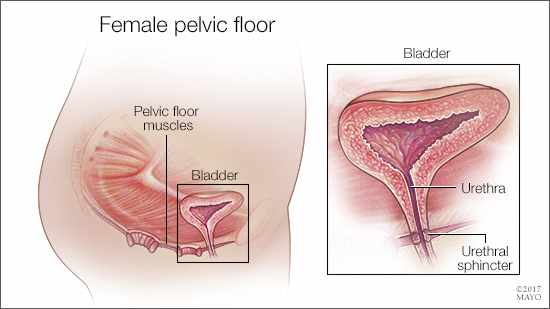-
Mayo Clinic Q and A: Behavioral treatment can help control incontinence
 DEAR MAYO CLINIC: For the past few years, I’ve noticed that, when I cough or sneeze, I sometimes leak a small amount of urine. Twice in the past month, I had this happen without warning. And, instead of it being a small leak, it was like I had wet my pants. Is this a normal part of aging, or should I see my doctor? Can it be prevented? I am an otherwise healthy 57-year-old woman.
DEAR MAYO CLINIC: For the past few years, I’ve noticed that, when I cough or sneeze, I sometimes leak a small amount of urine. Twice in the past month, I had this happen without warning. And, instead of it being a small leak, it was like I had wet my pants. Is this a normal part of aging, or should I see my doctor? Can it be prevented? I am an otherwise healthy 57-year-old woman.
ANSWER: Urinary incontinence becomes more common with age, especially in women. But that doesn’t mean you have to just put up with it. Instead, see your health care provider for an evaluation. In many cases, behavioral treatment, in which you learn techniques that help reduce incontinence, can control this condition.
Urinary incontinence is the loss of bladder control that results in accidental loss of urine. Women are twice as likely as men to suffer from it. Research conducted by the National Institutes of Health shows that between 25 and 45 percent of women have some degree of urinary incontinence. The frequency of this condition in women is due to various factors, including pregnancy, childbirth, menopause and the anatomy of the female urinary tract.
It sounds like you are actually experiencing two kinds of urinary incontinence. The first is called stress incontinence. It’s triggered by stress placed on the bladder and pelvic floor. That can happen, as in your case, when you cough or sneeze. Running, jumping or other physical activity also can cause stress incontinence. Typically, stress incontinence results in slight to moderate urine leaks.
The second type is called urge incontinence. It’s a sudden, intense urge to urinate, followed by an involuntary loss of urine. It’s caused by bladder muscle contractions. Urge incontinence usually results in more significant urine loss than stress incontinence. Whereas stress incontinence often can be anticipated based on a person’s activity, urge incontinence is more random and difficult to predict. That can make it much more disruptive to your day-to-day activities.
There are ways to regain control of your bladder. One of the most effective is learning pelvic floor muscle exercises to strengthen the muscles that regulate urination. The exercises differ somewhat for stress incontinence and urge incontinence. Your health care provider can instruct you on how to do the exercises and how often to do them, based on your individual symptoms.
Other behavioral techniques that may be useful, depending on your specific circumstances, include bladder training (in which you delay urination after you get the urge to go), scheduled toilet trips, and fluid and diet management.
When you see your health care provider, he or she may ask you to keep a record of your fluid intake and urination for several days. This information can help your health care provider diagnose incontinence and pinpoint its cause.
Studies have found that 60 to 75 percent of women who have urinary incontinence can control the condition using behavioral treatment. When that’s not enough, however, there are medications and other treatment options, including surgery, that can be used to treat urinary incontinence.
Make an appointment to see your health care provider, and talk about your symptoms. In many cases, urinary incontinence can be managed such that it doesn’t interfere with daily life. — Dr. Deborah Lightner, Urology, Mayo Clinic, Rochester, Minnesota







